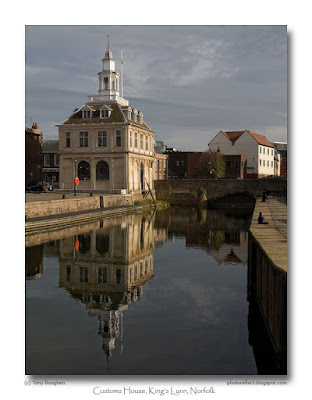 click photo to enlarge
click photo to enlarge"When we build let us think that we build for ever"
John Ruskin (1819-1900) English art critic, social critic, artist, etc
Looking at some of the flimsy, banal, or downright ugly buildings that are thrown up today there are times when I think Ruskin was right: all buildings should be well-designed, beautiful, and durable. But then the more rational side of me comes to the fore and I acknowledge that a building should be designed to meet a specific purpose, and that purpose may disappear leaving a structure that can't be used for something else. However, when you see a power station turned into an art gallery (Tate Modern), churches become houses, bars, antique shops and more, and disused warehouses transformed into desirable apartments, then you think that perhaps Ruskin was right after all, and that every buildings should incorporate an element of flexibility so that it can have a life beyond its initial purpose.
The building shown reflected in the dock at King's Lynn, Norfolk, is the old Customs House. It was built in 1683 by the gentleman-architect, Henry Bell, who was also a merchant of the town. Its original purpose was a Merchants' Exchange. However, the first floor was let to the Collector of Customs who subsequently, in 1718, bought the entire building. Today it is a museum and houses the Tourist Information offices of the town. It seems to me to be a building that embraces Ruskin's injunction, and whilst it may not last "for ever", the durable, carefully cut stone, elegant proportions and refined beauty of the structure will ensure its longevity. The architectural historian, Nikolaus Pevsner, called it "one of the finest late C17 public buildings in provincial England." That endorsement, too, should guarantee that it lives on to meet future needs.
A while ago I posted a shot of this building with the statue of Captain George Vancouver in the foreground. Here I used the reflection and the water of the dock to fill the near space.
photograph & text (c) T. Boughen
Camera: Olympus E510
Mode: Aperture Priority
Focal Length: 25mm (50mm/35mm equiv.)
F No: f6.3
Shutter Speed: 1/800
ISO: 100
Exposure Compensation: -1.0 EV
Image Stabilisation: On